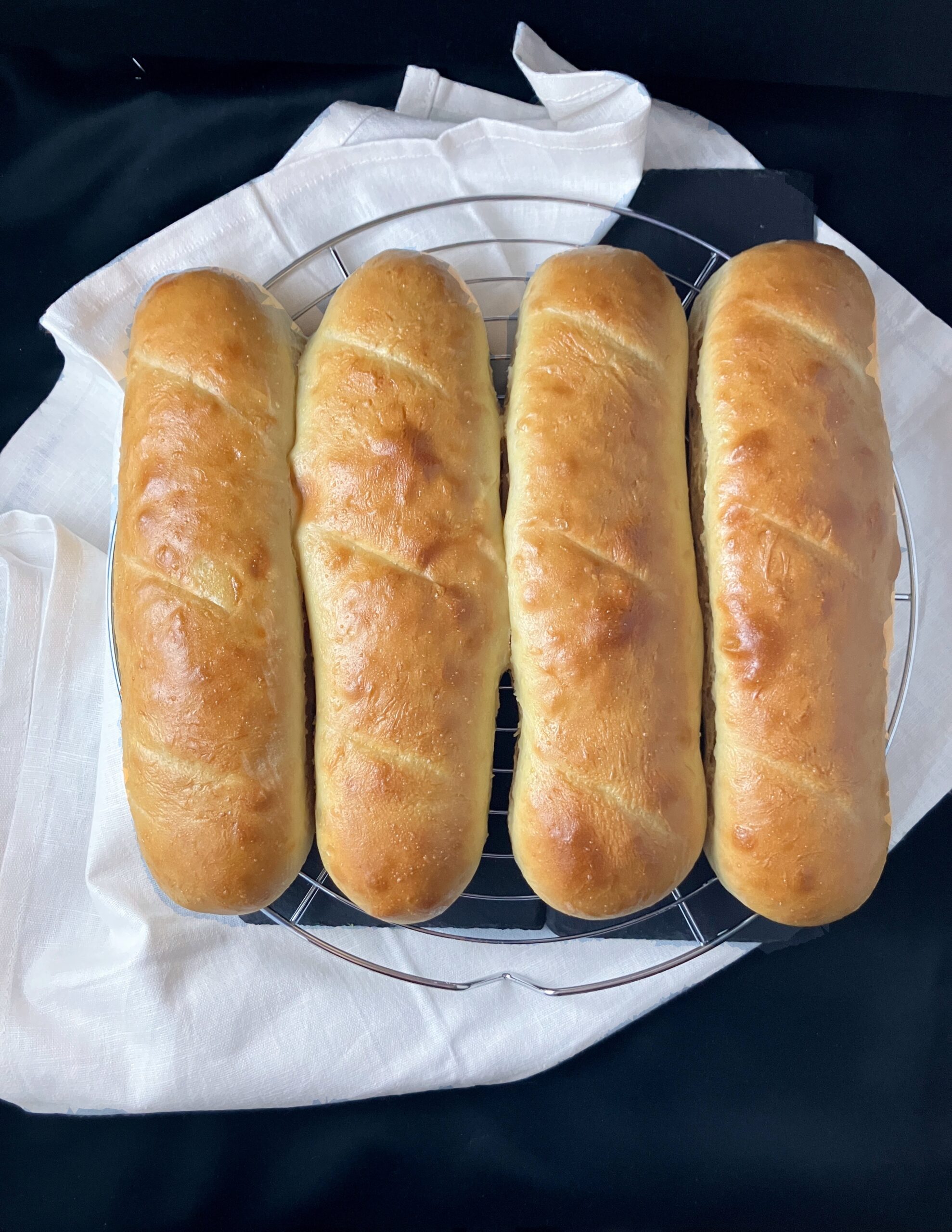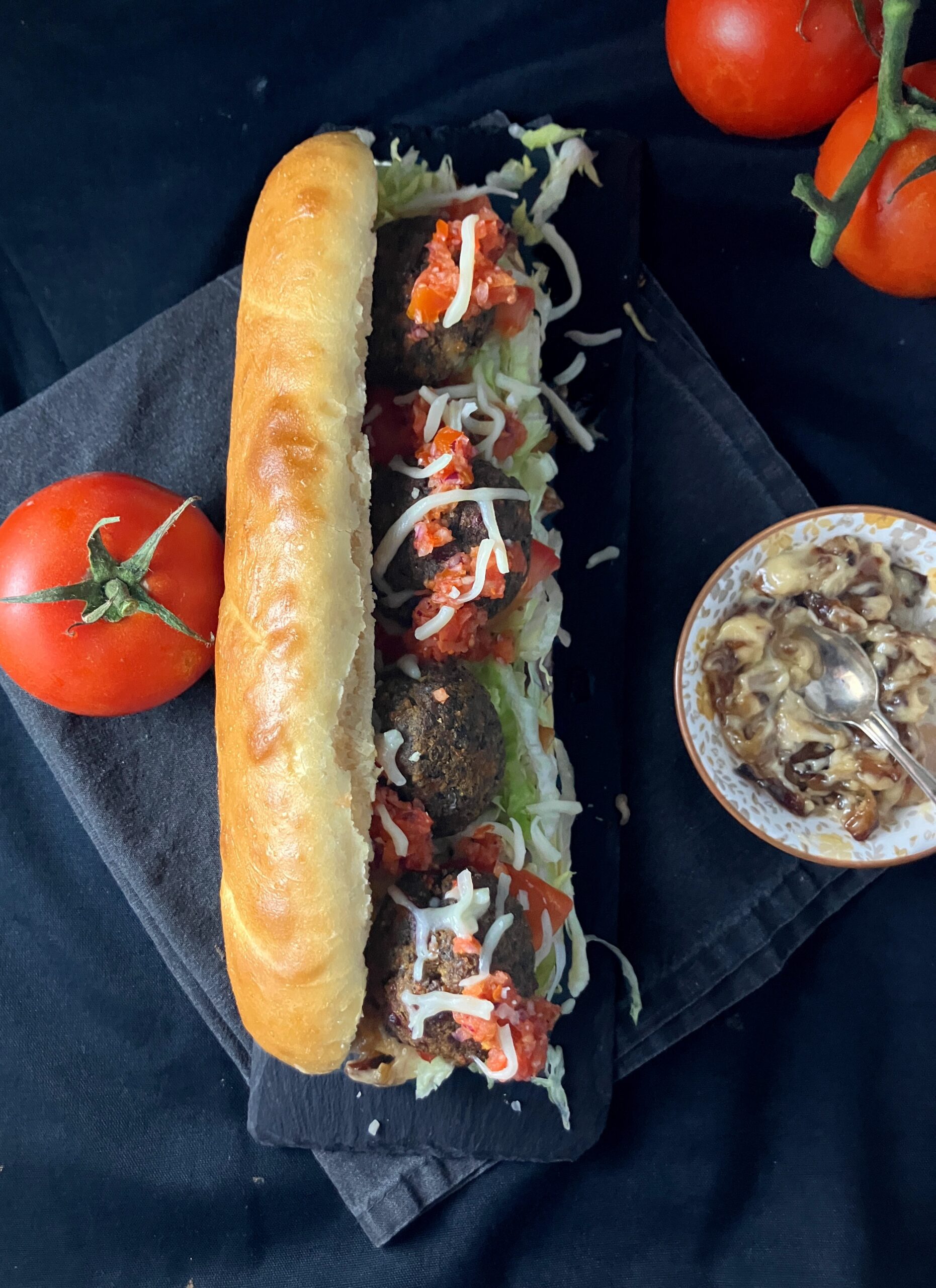Spelt Subway Bread Buns
These made from scratch spelt subway bread buns are simpler to make than you might think. Made from scratch, these buns are soft, fluffy and delicious, and they can be stuffed with meatballs or your own favourite filling.
If sliced white bread is your thing, make sure you check out my white spelt sandwich loaf (made in a bread maker).
These spelt subway bread buns are soft, fluffy and delicious.
Replicating store bought bread is not easy. I think the main reason is that homemade bread will never be as light and fluffy as factory, mass-produced bread. I talked a lot about manufactured bread in my post for spelt hot dog buns, so I won’t repeat it here.
However, this doesn’t mean to say that you can’t make light and fluffy bread at home. Because you can. Spelt flour is a tricky little bugger though, and making successful buns takes time and patience. If rushed, spelt dough can burst at the seams, and although it still tastes good, isn’t very pretty. I bake my bread buns at a lower temperature, and place them further down in the oven. I also use less flour and give them a longer proofing/resting time. All of this seems to help prevent splitting.
My spelt bread is a tried and tested recipe, and these spelt subway bread buns are no exception. I made these for a specific purpose: to house my fabulous mushroom meatballs (below). However, they work for any kind of sandwich.
If you are interested in making spelt bread, why not check out some of my other bread recipes (both sweet and savoury)?
Spelt Subway Bread Buns
Ingredients
- 1 egg
- 50g (3½ tbsp) butter
- 250ml (1 cup) milk
- 400-500g (3⅓-4 cups) white spelt flour (see note 1)
- 11g (4 tsp) yeast (see note 2)
- 1 tsp salt
- 1 tsp sugar
- 1 egg (for the egg wash)
Instructions
- Add the egg to a stand mixer bowl and give it a quick mix.
- Add the butter and milk and give it another quick mix (the butter will not dissolve or mix very well, but that's okay).
- Add 250g (2 cups) of flour along with the yeast, salt and sugar. Mix until everything is well combined.
- Gradually add as much additional flour as needed. I add one tablespoon at a time. Too much flour will result in dry bread, so it is much better to have less flour than too much. Your dough should be sticky. A good rule of thumb for me is that when the dough starts to pull away from the bowl, and the stand mixer starts to labour a little more, the dough is ready.
- Change to a dough hook (if you have one). If not, just continue with the paddle attachment. Work the dough for five minutes. It will still feel tacky, but should have completely pulled away from the sides. It will also easily come away from the attachment tool when pulled gently.
- Cover and leave until doubled in size. This is usually around 60-90 minutes, but the time will vary (if you've used cold butter, eggs and milk, then the proofing will take longer).
- Pour out the dough on to a well-floured surface. Knock it back and give it a quick knead.
- Cover and leave for another 20 minutes.
- Pre-heat the oven to 180℃ (356℉) and line a large baking tray with baking paper.
- Cut dough into 4 equal pieces (I weighed mine). Roll each one out into a length of around 5cm x 20cm (2" x 7¾"). Tuck the bottoms under and pinch the seam.
- Place seam side down on the baking tray with a small gap of around 2cm (¾") between them.
- Cover and allow the dough to rest for a further 20 minutes.
- Give the four buns a liberal brush of egg and diagonally slash each one three times.
- Bake for around 12 minutes (keep a very close eye and start checking at 10 minutes). The buns will be golden on top but still soft. Tap the bottoms, and if they sound hollow, they are ready.
- Allow the bread to cool completely before using. As it is fresh bread, it doesn't take long for them to harden up a little, so pop any not eaten straight away in the freezer. Enjoy!
Notes
- You can use spelt or regular flour for this recipe (just use the same amount).
- In Sweden we have something called dried yeast. It is used both in warm liquid to proof and also added directly to flour. I am aware that the US has two options for dried yeast, and I believe instant yeast is the most similar to our dried yeast. If you would like to use fresh yeast, the equivalent would be 50g (1¾ ounces).
2 thoughts on “Spelt Subway Bread Buns”
Leave a Reply






Have you frozen these? I’m wondering if it’s better to cook and freeze or freeze the dough? Thanks
Hi Sarah,
Yes, I always make a batch and then freeze most of them. I also freeze the dough, too, so both work. Spelt bread and cakes freezes very well!